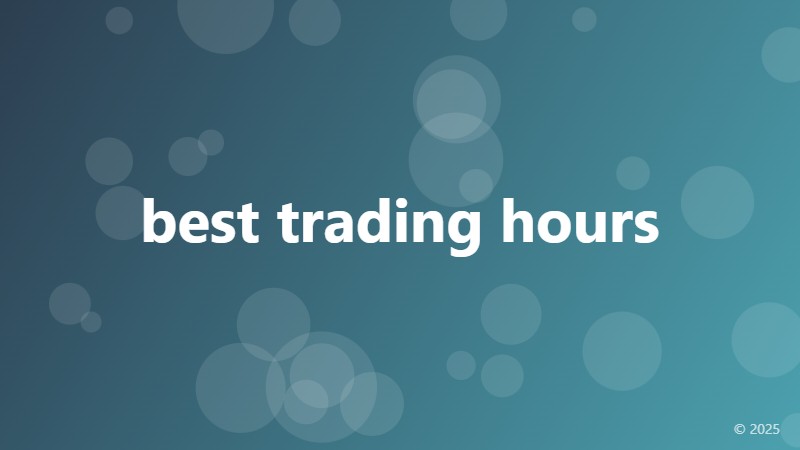best trading hours

Understanding the Best Trading Hours for Optimal Results
When it comes to trading, timing is everything. Knowing the best trading hours can significantly impact your chances of success in the markets. Whether you're a seasoned trader or just starting out, understanding the most profitable trading hours can help you maximize your returns and minimize your losses.
The Impact of Market Hours on Trading
The trading hours of a particular market can have a significant impact on the liquidity, volatility, and overall trading conditions. Different markets have different trading hours, and understanding these hours can help you make informed trading decisions. For example, the New York Stock Exchange (NYSE) is open from 9:30 am to 4:00 pm ET, while the London Stock Exchange (LSE) is open from 8:00 am to 4:30 pm GMT.
Identifying the Best Trading Hours for Your Strategy
The best trading hours for you will depend on your individual trading strategy and goals. If you're a day trader, you'll want to focus on the most active trading hours when markets are most liquid. If you're a swing trader, you may want to focus on the overlap between different market sessions. Here are some general guidelines to keep in mind:
The morning session (9:30 am to 12:00 pm ET) is typically the most active, with high liquidity and volatility.
The afternoon session (12:00 pm to 4:00 pm ET) is often characterized by lower liquidity and volatility.
The overlap between the London and New York sessions (8:00 am to 12:00 pm ET) can be particularly active, with high trading volumes.
Additional Factors to Consider
In addition to the trading hours themselves, there are several other factors to consider when determining the best trading hours for your strategy. These include:
Economic indicators and news releases, which can impact market volatility and liquidity.
Market sentiment and trends, which can influence trading conditions.
Technical analysis and chart patterns, which can help you identify profitable trading opportunities.
Conclusion
Understanding the best trading hours is crucial for any trader looking to maximize their returns and minimize their losses. By taking into account the trading hours of different markets, as well as additional factors such as economic indicators and market sentiment, you can develop a trading strategy that is tailored to your individual needs and goals. Remember to stay flexible and adapt to changing market conditions, and always prioritize risk management and discipline in your trading.